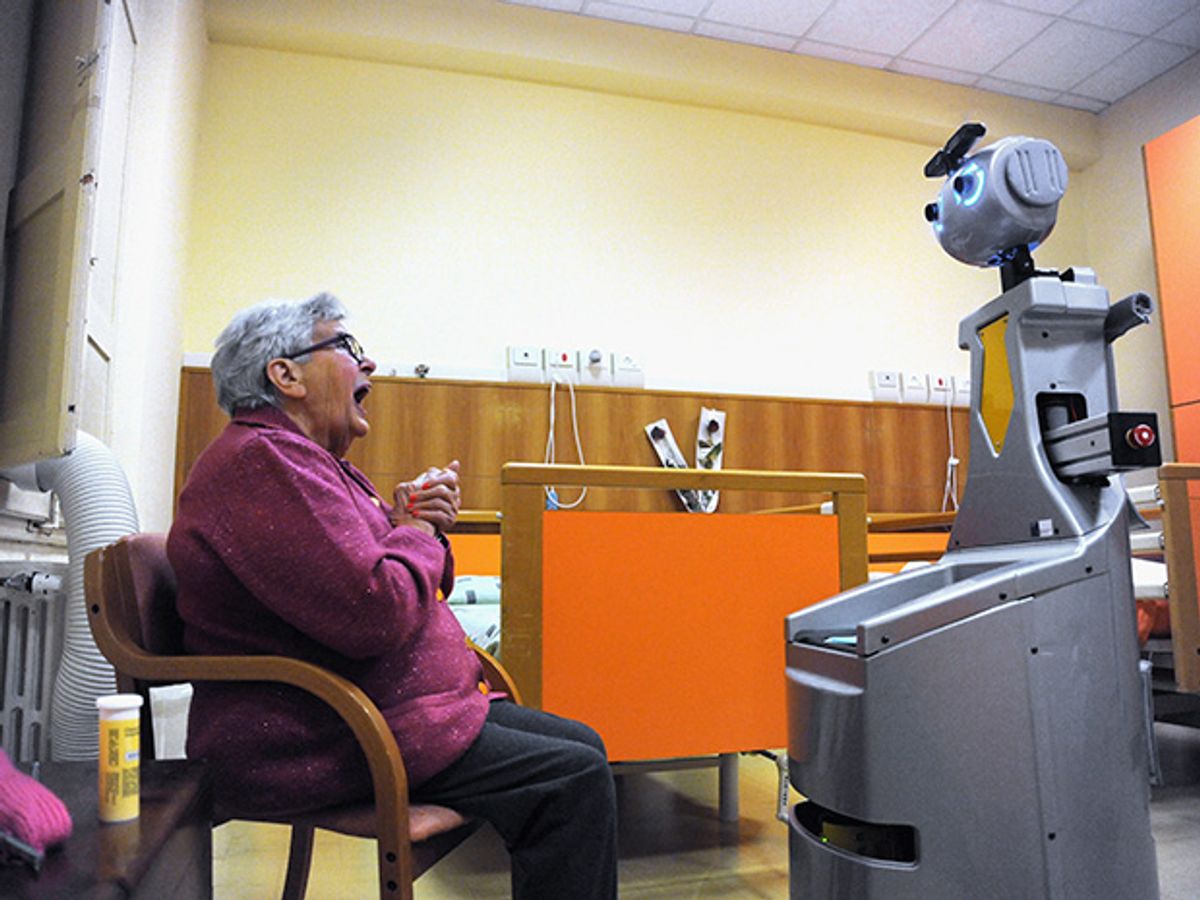Why do we get nervous when we think about robots working among us instead of tethered to the factory floor? We’re already dependent on hundreds if not thousands of automated systems and processes. We fly on planes that fly themselves. Our electrical grid can redirect itself to avoid power outages. We expect these systems to be reliable and safe, and to do what they’ve been programmed to do and nothing more.
Perhaps that’s the point. The machines and systems we’re reporting on in this issue will need to be able to make decisions based not only on gigantic data sets but on human behaviors and the social rules, customs, laws, and values we use to navigate our world. They’ll need to be able to figure out the “right” thing to do, in real time, the way any one of us could, in order to swerve around a jaywalking pedestrian, perform a life-saving surgical maneuver, or distinguish friendly citizens from enemy soldiers in a war zone, all without a helping human hand.
To build robots that inspire trust, roboticists are working with psychologists, sociologists, linguists, anthropologists, and other scientists to understand a lot more about what makes us trustworthy and reliable in all the different roles we play.
It’s not easy. As Meg Leta Jones, a law and technology scholar at Georgetown University points out, you need to be very precise about what you want to trust a robot to do. “What’s it supposed to be capable of? How does the system express its capability to a human user, and is it accurate? You need to be able to answer those questions, to define expectations, in order to build strong trust. We don’t know how to do that well yet.”
Another hard part of robot design is taking into account the difference between what people say they’d like a machine to do and what they really want it to do. So, for example, if you ask people if they want robots to be 100 percent truthful, everyone is likely to start out saying yes. But we know from psychological studies that if a robot is 100 percent truthful people begin resenting it. Designers, therefore, need to consider giving it a range of truthfulness—not unlike our own. Robots will also need to show some manners. We’ll be much more likely to trust machines that are able to explain their intentions and ask our permission before undertaking their work.
The public outcry about “killer robots” is a little premature. After all, the best and most remarkable autonomous robots we’ve seen up to now are the ones played by humans—Arnold Schwarzenegger’s Terminator, Scarlett Johansson’s Samantha in Her, and my new personal favorite, Bill Irwin as TARS in Interstellar.
But the killer robot furor is also brilliant because it’s helped move certain issues into the public eye. These issues being hashed out in industry and academia apply to all robots—the adorable ones that might sing our children to sleep and the ones that don’t look anything like us that may take our jobs. The furor presents us with a marvelous opportunity to get things right and not repeat the mistakes made with respect to privacy and security, accountability and human rights, in the headlong rush to create the modern Internet.
To attribute moral agency to machines, to give them “ethics,” seems far-fetched for the foreseeable future. They are not, after all, sentient creatures. But we humans certainly bear the ethical responsibility of giving them algorithmically rich and nuanced “minds” with which to interact with us. They can be only as moral and ethical, as compassionate and just, as we are.
This article appears in the June 2016 print issue as “Building Robots We Can Trust.”
